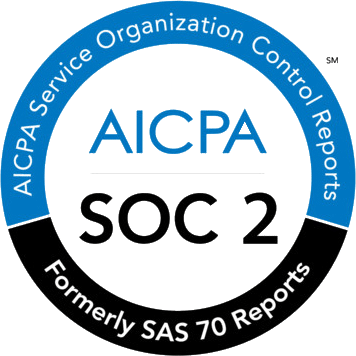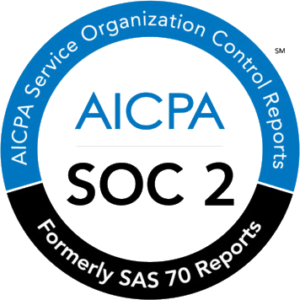- As companies adapt to the hybrid work model, they face challenges in balancing the needs of the company with the needs of their employees.
The workplace has shifted dramatically over the past couple of years.
Of course, this is in part due to companies being ‘forced’ into remote work. However, in recent times, both employers and employees have noticed the benefits of working outside of the office.
Because of this, companies all over the world have chosen to combine remote working with in-office time.
This type of working arrangement has been coined the ‘hybrid work model’.
Table of Contents
ToggleHybrid = win/win
The findings from State of Hybrid Work: Europe Edition, a survey of 2,000 business leaders (C-suite executives, department heads, HR managers and general managers) in the UK, Germany, France, Sweden, Finland, Norway and Denmark, showed that hybrid working is here to stay.
Here’s what it revealed.
- Almost 90 percent of European companies intend on a hybrid work setup, while even more than this are open to the idea of other progressive policies, such as a 4-day-workweek and reduced working hours.
- Only 11% of respondents expect their employees to work out of the office on a full-time basis.
- 62% of European business leaders report that hybrid working makes companies more profitable.
- Remote work offers a wider pool of talent to employers, and there is reduced costs and the organization’s carbon footprint is also reduced.
Of course, the hybrid work model is uncharted territory for most companies.
Flourishing in this new era means recognizing the challenges that come with it.
Challenges with the hybrid work model:
1. Maintaining organizational culture
Your corporate culture is the combination of your organization’s mission, values and goals. When employees are scattered all over the world, this culture might become diluted.
Company leaders and HR need to work extra hard to make sure that the same message is communicated and more importantly, understood by everyone, wherever they are.
What companies can do to maintain company culture:
The key is establishing consistent touchpoints, whether digital or physical, to influence employees towards corporate culture and values.
- Share company values:
List these values on your website and in your physical office. Start from day zero and make sure to filter applicants using values-centric questions during the hiring process. Award employees who exemplify the company culture.
- Provide updates:
Create a weekly newsletter to share what’s happening in the company, including the goals, milestones and accomplishments of different departments.
You can also share work tips and best practices to promote your desired work-related behaviors. Trickle this practice down to the department level where each group will have a weekly round-up.
- Listen to your employees
Show your employees you are listening to them by asking for their feedback via surveys, weekly one-on-one’s or team meetings. Don’t be afraid to ask for their suggestions on how to improve company culture.
You can also organize company-wide or group events, retreats, team building and training sessions, whether virtual or in person.
2. Building relationships and camaraderie between colleagues
At the end of the day, humans are social beings.
Employees who do not feel a sense of belonging with the organization or his or her team may start suffering from low morale.
A lack of social connectedness may lead to feelings of isolation and loneliness. This can affect the trust level between colleagues and can lead to a lack of productivity.
What companies can do to build relationships and connectedness
With technology and a little bit of creativity, there are so many different ways in which companies can make employees feel loved, seen and cared for, regardless where they are working from.
- Make it easy for employees to communicate
Provide software and apps used for calls or chat, such as Slack, Zoom, Skype, Microsoft Teams, etc.
To promote inter-departmental communication and camaraderie, some companies are creating fun chat channels to allow employees with mutual interests to connect with each other.
- Hold regular team meetings and one-on-one meetings
Help the employee feel supported and connected to goals and targets.
- Organize after-work social activities
These can include trivia and game nights, cooking classes, corporate social activities, dance sessions, etc.
- Introduce wellness breaks
Inject 15-minute morning or afternoon yoga or stretching sessions that people can join from wherever they are working.
- Promote healthy competition, teamwork and good sportsmanship:
Hold company-wide competitions, such as team / individual fitness challenges, scavenger hunts, and social media contests.
- Send care packages:
This can be for all employees, for those celebrating their birthday or those who are sick.
3. Establishing policies and structures around the hybrid work setup
Some people interchange the hybrid work culture with fully flexible hours, which may not be what is wanted from the organization they are working for.
An example of this would be asking for a report at 8am and then receiving a reply from your colleague at 8pm.
In the absence of clear hybrid work policies, communication and productivity will suffer.
What companies can do to establishing policies and structures
- Work hours:
Is there a time window when employees are expected to be online and active?
While you can be flexible on the start and end time, it would be wise to set specific hours when everyone should be working simultaneously.
- Documenting work tasks / accomplishments
How will employees’ accomplishments be measured?
Will there be end-of-day or end-of-week reports that need to be filled up?
How many tasks in the team productivity software should an employee be able to mark as DONE in one week?
- Team meetings / discussions: be sure to clearly communicate with employees the meetings that they are expected or required to attend, so they can block off the schedule on their calendar.
- Lead time for updates / replies:
You want your company to maintain good customer service and responsiveness even with the hybrid work setup.
Boost employee retention & morale with parking benefits
Discover how Wayleadr's parking benefits can help you improve employee retention and morale
Learn More4. Security of company network and information
The hybrid work model has highlighted two critical technological challenges: cybersecurity and remote access / technical support.
Cybersecurity risk is the odds of exposure, loss of critical assets and confidential information, or possible harm due to a cyber attack or security breach within an organization’s network.
The risk is especially high when employees work in public locations and connect their device to a public WiFi.
Companies also need to think about how to provide technical support to employees working remotely.
Unresolved problems with software or hardware, lack of checking, and unoptimized systems might lead to malfunctioning devices and difficulties with employees’ work.
What companies can do to secure company network and information :
It’s important to establish cybersecurity policies for your company.
Such protocols must educate the employees on the best practices for the organization’s data or network, such as:
- How to identify phishing emails
- Prohibiting software downloads and browser extensions without the IT’s permission
- Giving a list of pages and apps that they cannot open using the company’s devices
- Sending and receiving communication using only official company accounts
Consider limiting the amount of information that employees will have access to, depending on his job function and seniority level in the company.
Companies should invest in software that can proactively identify malware, block access to malicious servers and scan incoming and outgoing internet traffic for threats. Some of the most highly-rated web security softwares are: SiteLock, Heimdal Corp and WebTitan.
You also need remote tech support tools and software, which will allow an IT technician to connect to a computer and perform operations on them, wherever it may be located.
Some of the most popular remote support softwares are: Dameware Report Support, LogMeIn Rescue and TeamViewer.
5. Hybrid work-compatible performance evaluation
How do you ensure that everyone is seen and heard in a hybrid work setup?
A common complaint about the hybrid work setup is that employees feel that when it comes to career advancement and promotion opportunities, the scale is tipped in favor of those who report more frequently within the workplace.
On the other hand, this perceived inequality goes both ways- with the in-office group sometimes feeling exerting more effort, due to their lack of visibility on what the other group is doing.
What companies can do to evaluate hybrid work performance:
Hybrid Work Must Be Fair– the title of this Forbes article basically summarizes what organizations must aim for when establishing their guidelines for this new way of working.
- Build a culture of trust: by being transparent, managing issues and exhibiting integrity.
- Make sure leaders are accessible and give a fair amount of time to each employee.
- Hold people accountable: Steve Gruenert and Todd Whitaker said, “The culture of any organization is shaped by the worst behavior the leader is willing to tolerate.”
Remote workers might pretend to be productive, while spending their time doing other things at home. Office workers might feel more ‘relaxed’ when their manager is not physically present at the workplace, that they may end up slacking off on their duties.
Do not allow such damaging behaviors to set the organizational culture.
Hold people accountable for their performance and outcomes.
6. Adjustments in the physical workplace
With fewer people reporting to the office at any given time, companies might want to make adjustments in the office layout to make the layout even more COVID-resistant.
What companies can do to adjust the physical workplace:
Many organizations are opting for an open floor layout, with fewer private offices and more conference rooms with video conferencing tools.
Make sure that there is enough social distancing between workstations.
Air-purifying plants / machines, sanitizing stations and thermal scanners are welcome additions that can make employees feel safe and cared for.
7. Adapting parking allocation to the hybrid work schedule
If you have parking spaces allocated to specific employees, the hybrid work setup might render the spaces unoccupied a large percentage of the time.
Available space can be a sensitive issue and some individuals might not be willing to give up their assigned slots, even on the days when they will not be reporting physically to the office.
This leads to underutilized company resources. Not to mention, resentment from in-office employees who weren’t able to secure a slot, in spite of seeing empty spaces.
What can companies do to adapt park allocation to the hybrid work schedule:
Car space management must be adapted to the flexible and possibly unpredictable in-office working schedule. Of course, we don’t recommend that you do this manually as it can be incredibly time-consuming and stressful.
It is best to invest in last mile automation software.
It can automate the entire process of allocation and reservation. Employees who have assigned slots can use the software to mark the days when they will be reporting to the office, and the software automatically allows slots that will not be used by the preferred user for the day to be used by other employees.
Wayleadr comes with valuable features such as a booking system, app download, real-time occupancy tracking, barrier integration, advanced reporting, automated parking payment, and much more.
8. Controlling the number of people in the workplace
The hybrid work setup was initially created to limit the number of people in the office, in order to keep everyone safe.
Now, office managers might be blindsided by the unexpected influx of people when managers or team leaders call for an in-person meeting with their group.
This could compromise safety, and lead to tension over workstations and conference rooms.
What companies can do to control the number of people in the workplace
Be clear on the maximum limit of people you can accommodate at the office, the activities that will be prioritized for face-to-face interaction, and the reservation and approval protocol.
Your policies and information should be integrated into your chosen workspace management software, such as Meetio Desk and Roomzilla, which can help you automate hot desking, scheduling and reservations management.
9. The need to review employee benefits and priorities
The pandemic has revealed that inadequacies in care infrastructure in the workplace that leads to burnouts.
This has led to a need to readdress the benefits and priorities that are available to hybrid workers.
What employees can do to review employee benefits and priorities:
The Future of Benefits report showed that 98% of leaders surveyed said they plan to offer or expand at least one of these employee benefits: child and senior care, work schedule and outcomes flexibility, and mental health support.
Care benefits are fundamental to employees’ productivity and in keeping them in the workforce.
10. Blurred work-life balance and overall employee well-being
Working from home can soften the line between work and personal life which can lead employees to feel more stressed and eventually burn out.
What companies can do to ensure work-life balance and overall employee well-being:
Employers need to think how to best support employees and provide a positive remote work experience.
- Leaders have a big role in educating their employees on the signs of burnout. These include fatigue, poor quality of sleep, physical pains and feelings of frustration towards work.
- Companies can introduce work breaks for people to stretch, exercise, walk around their block, or take a short nap.
- Encourage employees to have log-out time routine.
- Respect your employees’ meal times. You can ask your staff to put their communication software into ‘away mode’ or to set their mobile phones into airplane mode when they are having their breaks.
Hybrid work offers both employees and employers a whole host of benefits. However, it is not without its challenges.
Of course, it’s perfectly normal to have issues pop up as you start implementing something new, but we hope our tips above were able to give you ideas on how to overcome them.
Contact Wayleadr today for a free demo and we will show you how we can help your team adapt to the hybrid work model.












